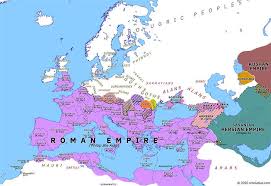Europe’s Economic Recovery: Current State and Future Challenges

Introduction
Europe, comprising 44 countries, is at a crucial juncture as it attempts to recover from the economic fallout of the COVID-19 pandemic. The region’s diverse economies are showcasing varying rates of recovery, intertwined with geopolitical tensions, energy crises, and inflationary pressures. Understanding these dynamics is vital for both policymakers and citizens, as they directly influence the daily lives of millions.
Current Economic Landscape
As of late 2023, Europe is witnessing moderate economic growth, with the European Commission forecasting a GDP growth of around 2% for the year. The recovery is largely driven by robust consumer spending and a rebound in the services sector, particularly in tourism and hospitality, which were significantly affected during the pandemic. However, challenges remain. Inflation rates have surged, with several countries reporting rates above 5%, creating pressure on household budgets and overall spending.
Additionally, Europe’s energy landscape is undergoing a drastic transformation, propelled by the need to reduce reliance on Russian gas. Countries are investing heavily in renewable energy sources, such as wind and solar, to secure energy independence and combat climate change. This transition, while necessary, poses short-term challenges, including potential energy shortages and increased costs for consumers and industries.
Geopolitical Factors Influencing Europe
Furthermore, geopolitical tensions, particularly related to the ongoing conflict in Ukraine, have complicated the European recovery process. The war has led to unprecedented sanctions against Russia and has shaken energy supplies, increasing competition among European nations to secure alternative sources. The political landscape remains tense, impacting trade relationships and economic policies across the continent.
Future Outlook and Conclusion
Looking ahead, European nations need to navigate these complexities while promoting sustainable growth. The EU has initiated various recovery funds aimed at supporting member states in their recovery journeys, focusing on digital transformation and green initiatives. Analysts suggest that these efforts could lead to a more resilient economic framework for Europe in the future.
In conclusion, while Europe is on a path towards economic recovery, the journey is fraught with challenges. The successful navigation of economic, energy, and geopolitical hurdles will determine the continent’s ability to emerge stronger post-pandemic. As countries work to stabilise their economies and address inflation, the importance of collaborative strategies becomes even more apparent for fostering long-term prosperity across Europe.









